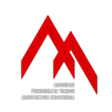Spatial Character of Tokyo’s Famous Tourist Attractions
DOI:
https://doi.org/10.21776/ub.ruas.2019.017.01.1Keywords:
urban tourism, spatial character, urban architectureAbstract
Various competitiveness reports on tourism have ranked Japan as one of the most visited countries in Asia. Along with South Korea and Singapore, Japan offers many unique traits to the tourists. Since the establishment of “Kihinkai†(lit. Welcome Society), Japan’s first organization to engage with foreign tourists, the country has succeeded in developing various sector of tourism such as heritage sites, nature-based tourism, religious sites, and urban tourism. Tokyo Metropolis, as the capital of Japan, is one of the best examples in urban tourism sector. Hotel occupancy in Tokyo has risen around 80% in the last decade, showing high growth of tourism in the city. The aforementioned growth is supported by many factors, with one of them being the enhancement of tourist attractions. The paper examines Tokyo’s nine most famous tourist attractions specifically at their spatial aspects. The complexity of place, accessibility and the presence of surrounding amenities, as well as the ambience or atmosphere offered by the attractions are the components analyzed to form a set of characteristics that define the character of Tokyo’s tourist attractions. The compiled data can be a precedent study or preliminary guideline for other big cities in Japan or Asia to develop their potential of urban tourism.  Â
References
Baloglu, S., & W.McCleary, K. (1999). A model of destination image formation. Annals of Tourism Research, 26(4), 868–897. https://doi.org/https://doi.org/10.1016/S0160-7383(99)00030-4
Cegar, I. (2014). ARCHITECTURE’S ROLE IN TOURISM AND CITY BRANDING. Retrieved November 29, 2018, from http://www.iaacblog.com/programs/architectures-role-in-tourism-and-city-branding_/
Dawes, M., & Ostwald, M. J. (2013). Precise Locations in Space : An Alternative Approach to Space Syntax Analysis Using Intersection Points, 3(1), 1–11. https://doi.org/10.5923/j.arch.20130301.01
Georgiou, M. (2006). A Topological Approach to Relational Design Problems. University College London. Retrieved from https://www.google.com/url?sa=t&rct=j&q=&esrc=s&source=web&cd=2&ved=2ahUKEwjsrYf9nPTeAhXMqY8KHdZIDDIQFjABegQIBRAC&url=http%3A%2F%2Fdiscovery.ucl.ac.uk%2F2919%2F1%2F2919.pdf&usg=AOvVaw0y50bHkSBbGx28t_ELiWfq
Giriwati, N., Homma, R., & Iki, K. (2016). Urban tourism : designing a tourism space in a city context for social sustainability. In The Sustainable City VIII (pp. 165–176). https://doi.org/10.2495/SC130141
Gunn, C. A. (2002). Tourism Planning: Basics, Concepts, and Cases. Psychology Press.
Japan National Tourism Organization. (2017). Tokyo & Vicinity Walking Guide. Tokyo.
Kurihara, T., & Okamoto, N. (2010). Foreign Visitor ’ s Evaluation on Tourism Environment, 8, 912–925.
Leheny, D. (2003). The Rules of Play: National Identity and the Shaping of Japanese Leisure. New York: Cornell University Press.
Manifesty, O. R., & Afif, N. (2018). From Angkringan to Coworking Space : The Emergence of New Social Spaces for Young People. In The 4th International Conference on Indonesian Architecture and Planning. Yogyakarta: Universitas Gadjah Mada.
Orcutt, A. (2012). World’s Most-Visited Sacred Sites. Retrieved December 6, 2018, from https://www.travelandleisure.com/slideshows/worlds-most-visited-sacred-sites
Pratt, S., Sum, W., Chan, A., Pratt, S., Sum, W., & Chan, A. (2017). Destination Image and Intention to Visit the Tokyo 2020 Olympics among Hong Kong Generation Y. Journal of China Tourism Research, 00(00), 1–19. https://doi.org/10.1080/19388160.2016.1246272
Salingaros, N. A. (2014). Complexity in Architecture and Design. Oz Journal, 36(May), 1–13.
Sassen, S. (2001). The Global City: New York, London, Tokyo (2nd ed.). New Jersey: Princeton University Press.
The Urban Phoenix. (2018). What If We Viewed Public Space Like Tourist Attractions? Retrieved December 2, 2018, from https://theurbanphoenix.com/2018/03/26/parksandtourism/
Tokyo Metropolitan Government. (2017). PRIME Tourist Destination City Tokyo. Tokyo. Retrieved from https://www.google.com/url?sa=t&rct=j&q=&esrc=s&source=web&cd=2&ved=2ahUKEwjLxYGIkfTeAhUS4o8KHdjgB9oQFjABegQICBAC&url=http%3A%2F%2Fwww.sangyo-rodo.metro.tokyo.jp%2Fplan%2Ftourism%2Fpocket_total_2018en.pdf&usg=AOvVaw2wN4YqGtOG5-eLL5VdXMYm
Tokyo Metropolitan Government. (2018). PRIME Tourist Destination City Tokyo. Tokyo.
World Tourism Cities Federation. (2017). City Tourism Performance Research Report for Case Study “Tokyo.†Tokyo.
Downloads
Published
How to Cite
Issue
Section
License
Authors who publish with this journal agree to the following terms:
- Authors retain copyright and grant the journal right of first publication with the work simultaneously licensed under a Creative Commons Attribution License that allows others to share the work with an acknowledgement of the work's authorship and initial publication in this journal.
- Authors are able to enter into separate, additional contractual arrangements for the non-exclusive distribution of the journal's published version of the work (e.g., post it to an institutional repository or publish it in a book), with an acknowledgement of its initial publication in this journal.
- Authors are permitted and encouraged to post their work online (e.g., in institutional repositories or on their website) prior to and during the submission process, as it can lead to productive exchanges, as well as earlier and greater citation of published work (See The Effect of Open Access).












